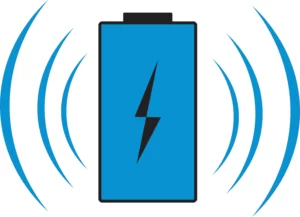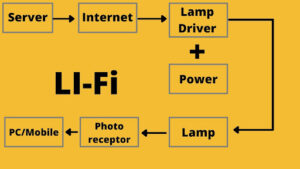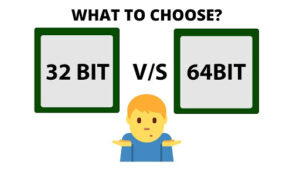INTERNET
The Internet is a connection between lots of computers of different types of various networks around the world. We can say it is a network of networks where millions of people
use the internet to search and share information and ideas. It has been grown
into
(ii) Transmission Control
Protocol (TCP).
use the internet to search and share information and ideas. It has been grown
into
an important infrastructure supporting a widespread, multi-disciplinary
community. This community now consists of scientists
and researchers, non-profit organizations, large corporations, government
agencies students, and individual consumers. You can say that the Internet is an immensely complex combination
of thousands of technologies and dozens of services used by millions of people
around the world each day. The internet inks thousands of computer networks.
nowadays the mobiles are also included. there is a certain rule called a protocol, which is used to exchange information between computers in
these networks. These different computers and networks are united with the common thread of two
protocols which are called
community. This community now consists of scientists
and researchers, non-profit organizations, large corporations, government
agencies students, and individual consumers. You can say that the Internet is an immensely complex combination
of thousands of technologies and dozens of services used by millions of people
around the world each day. The internet inks thousands of computer networks.
nowadays the mobiles are also included. there is a certain rule called a protocol, which is used to exchange information between computers in
these networks. These different computers and networks are united with the common thread of two
protocols which are called
(i)
Internet Protocol (IP)
Internet Protocol (IP)
(ii) Transmission Control
Protocol (TCP).
Different Methods To Connect Internet
a). Slip(Serial Line Internet
Protocol):– SLIP
is an industry-standard protocol developed in 1984 for units platform that supports
TCP/IP (Transmission Control Protocol/Internet Protocol) networking over serial
transmission lines.
Protocol):– SLIP
is an industry-standard protocol developed in 1984 for units platform that supports
TCP/IP (Transmission Control Protocol/Internet Protocol) networking over serial
transmission lines.
They are typically
dial-up connections using a MODEM. SLIP is replaced by PPP(Point to Point
Protocol).
dial-up connections using a MODEM. SLIP is replaced by PPP(Point to Point
Protocol).
SLIP is a full internet connection
over telephone lines that send an internet packet via 9600 bps MODEM or better.
over telephone lines that send an internet packet via 9600 bps MODEM or better.
b. PPP(Pointy to Point Protocol):-
PPP is an
industry-standard data link layer protocol for WAN developed in the 1990s.
PPP is an
industry-standard data link layer protocol for WAN developed in the 1990s.
PPP allows Remote Access Service.
PPP has 4 stages – (i) Link
establishment; (ii) User authentication; (iii) Call back; (iv) Configuration
establishment; (ii) User authentication; (iii) Call back; (iv) Configuration
(i). Link establishment:– PPP uses LCP(Line Control Protocol)
to establish and maintain a PPP link over a serial transmission line. To test its integrity LCP frames
are sent over the data link.
to establish and maintain a PPP link over a serial transmission line. To test its integrity LCP frames
are sent over the data link.
(ii). User authentication:– PPP uses an authentication protocol to
authenticate a user.
authenticate a user.
(iii). Call back:– PPP do call back control using
CBCP(Call Back Control Protocol).
CBCP(Call Back Control Protocol).
(iv). Configuration:– NCP(Network Connection Protocol) is
used to establish a network connection, perform compression and encryption.
used to establish a network connection, perform compression and encryption.
To establish a network connection between the PPP server and the remote PPP
client NCP frames are sent over the link.
client NCP frames are sent over the link.
c. ISDN (Integrated Service
Digital Network ) line:– It is a special digital telephone line that can be used to dial
into the internet at very high speeds usually from 64 kbps to 128 kbps. A newer
technology called ADSL(Asymmetric Digital Subscriber Line) allows very high-speed connections over existing telephone wires.
Digital Network ) line:– It is a special digital telephone line that can be used to dial
into the internet at very high speeds usually from 64 kbps to 128 kbps. A newer
technology called ADSL(Asymmetric Digital Subscriber Line) allows very high-speed connections over existing telephone wires.
d. Cable MODEM:– Internet can be accessed through the
cable T.V. The same cable that carries the signal for cable tv.
cable T.V. The same cable that carries the signal for cable tv.
e. WEB T.V.
Different levels of connectivity
Level 1
connectivity:– Level 1 accessed through a gateway. For example- the Department or
University computer network.
connectivity:– Level 1 accessed through a gateway. For example- the Department or
University computer network.
Level 2
connectivity:– Level 2 accessed via MODEM to host, connected to the
network. File transfer from the internet to the client requires a two-step download.
connectivity:– Level 2 accessed via MODEM to host, connected to the
network. File transfer from the internet to the client requires a two-step download.
(i).
Internet to host
Internet to host
(i). Host to
client
client
Level 2 connectivity is the most common internet access.
Level 3
connectivity:– Some companies provide SLIP or PPP internet access.
connectivity:– Some companies provide SLIP or PPP internet access.





